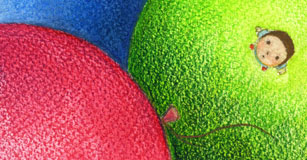Build 21st Century Skills with Design Thinking
An interview with Dr. Maureen Carroll

Dr. Maureen Carroll is the founder of Lime Design and Director of Stanford University’s Research in Education & Design Laboratory (REDlab) and adjunct faculty in the School of Education. She has been helping educators implement design thinking into their classrooms for the past five years. She recently co-authored with Melissa Pelochino, Lois Logan, and Richard Cox, designED: Integrating Design Thinking In Your K-12 Classroom.
What is design thinking?
Design thinking is both a process and a mindset. This human-centered innovation process finds solutions and solves problems in a user-centered context. Design thinking does not solve the mysteries of the universe; instead, a single problem is solved for a single user, with the hope that the resultant knowledge and empathetic understanding of that user’s needs will ultimately work for lots of other people. A familiar example is OXO kitchen tools. An engineer worked to make opening cans easier for his arthritic wife, and the resulting products work for many other people.
What does the design thinking process look like?
To begin, you Frame the problem so you can better empathize with your user. You conduct interviews and record observations. You use qualitative research techniques, working as an ethnographer to collect the story of the user to better identify exactly what they need. The mindset you attain during this part of the process is empathy.
The second part of the process is Imagine. This phase requires creative, generative brainstorms. Your goal is to develop a mindset that defers judgment, is open to different ideas, listens actively, and builds on the ideas of others. You are looking to push the boundaries and find a truly transformative innovation.
The third phase, Make, is about making the ideas tangible. This process involves iterative prototyping: developing a prototype, testing it, listening to feedback, making changes, and prototyping and testing again. Rather than creating an entirely new product, you quickly develop a “low resolution” version that you refine. The mindset is to learn from failure.
Ever tried. Ever failed. No matter. Try Again. Fail again. Fail better.
— Samuel Beckett
Teachers are natural prototypers. A lesson that may not be as polished as they’d like during first period is finely honed by fifth period.
Why is it important to be, or become, a design thinker?
In our quest to build thinkers for the 21st century, we have focused almost solely on analytical thinking. While analytical thinking is critically important, design thinking blends in equally powerful creative thinking.
It’s not that creative thinking is more important ... a blend of both types of thinking are more productive for finding truly unique and transformative innovation.
Design thinking requires students to be strategic and metacognitive about when to apply creative thinking and when to apply analytical thinking. Students must recognize where they are in the process and apply different ways of thinking to produce the best results. For example, when you are in the creating prototypes in the Make phase, it is essential to analyze whether you correctly understand your user’s needs.
“My contribution is to teach as many people as I can to use both sides of their brain, so that for every problem, every decision in their lives, they consider creative as well as analytical solutions.”
— David Kelley, founder Stanford’s Hasso Plattner Institute of Design
Why is important to teach design thinking in a K12 education context?
Design thinking builds two important mindsets: risk taking and resiliency. Design thinking requires you to take risks as a learner and push yourself. It is assumed that you will not succeed with your first prototype, so it is easier to put yourself out there.
A resilient 21st century learner works to find out what works and bounces back from failure. You must have a willingness to accept that a problem has multiple solutions and develop your ability to try again.Design thinkers learn from their mistakes so they can develop a better solution next time.
This sounds a bit like project- or problem-based learning. Is it?
Design thinking is different from project-based learning because the problem is not initially identified for the students. Design thinking requires that students identify the problem for themselves. Figuring out which questions to ask and what problems are worth solving gives students a different sense of agency.
Why did you write “designED: Integrating Design Thinking In Your K-12 Classroom?”
We were inspired by all the students and teachers we worked with and wanted to create a collection of design thinking activities. Our hope is that other educators will try these easy-to-implement ideas so they and their students can quickly and easily practice the mindsets necessary for successful design thinking.
Editor’s Note: I also spoke with Michelle Flores, a teacher at Aspire Capitol Heights Academy in Sacramento, California about her recent experience using some of the projects in designED with her 3rd graders.
Many people believe design thinking belongs the secondary classroom. Why did you try it with your 3rd graders?
For the past couple of weeks, I have been using activities from designED during my morning meeting. In fact, we worked on the “My Story is Your Story” activity for an entire week. During that time, students worked in pairs to share a personal story. The person listening to the story had to retell it in the first person, trying to express how the other person felt and convey the perspective of the original storyteller.
My students loved it, but it wasn't easy. They had to struggle to listen and put themselves in each other’s shoes. While this may not be easy for younger learners, the empathy skills they learned are crucial for future success. Seeing things from their classmates’ perspectives also helped build a strong sense of community in my classroom.
I am definitely looking forward to doing all of the activities with my students!
More resources to help you learn more about design thinking
Things We’ve Learned about Design Thinking, K-12 Education & 21st Century Learning
https://limedesignassociates.com/wordpress/archives/5
The Marshmallow Challenge TED Talk - the importance of learning from failure
https://marshmallowchallenge.com/TED_Talk.html
















